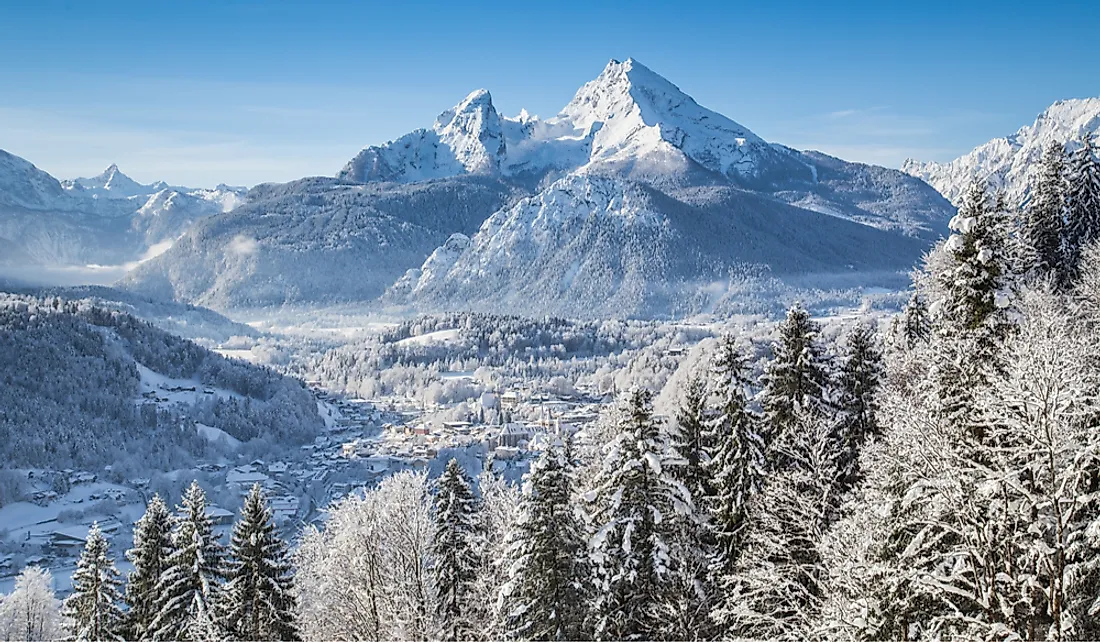Where Are The Bavarian Alps?

The Bavarian Alps refers to a group of mountain ranges located within the Northern Limestone Alps, which extend over parts of Germany and Austria. They are part of the larger Alps which stretches across much of Europe. More specifically, the ranges within the Bavarian Alps are located with the German state of Bavaria. The Bavarian Alps stretch from the Lechtaler Alps for about 70 miles in an east-northeast direction, all the way to Inn River, near Kufstein, Austria. The highest peak in the Bavarian Alps is Zugspitze, which has an elevation of 9,718 ft. Ranges within the Bavarian Alps include Karwendel, Nord Chain, and Wetterstein. In order to protect the range's landscape and wildlife from urbanization and other threats, a large national park has been established within the Bavarian Alps.
Geography
The extent or boundaries of the Bavarian Alps has changed over time. For example, sometimes the term refers to the portion of the Eastern Alps located within the state of Bavaria. Traditionally, the Bavarian Alps only included the mountain ranges between the Lech and Saalach rivers, and therefore did not include the Berchtesgaden Alps and Allgäu Alps. However, more recently, the Berchtesgaden Alps and Allgäu Alps are often considered part of the Bavarian Alps. Additionally, the Italian Partizione delle Alpi classification includes the Allgäu Alps, Lechtal Alps, and the Achen Lake mountains as part of the Bavarian Alps. The Bavarian Alps should also not be confused with the Bavarian Prealps, which is a separate and distinct mountain range in Bavaria.
Landscape
The landscape of the Bavarian Alps is similar to the general characteristics of the larger Northern Limestone Alps. Influenced by the previous ice age, the Bavarian Alps feature a number of lakes, U-shaped valleys, and cirques created by glaciers. Ice age rivers and glaciers also created gently rolling terrain with bogs and lakes in the Alpine Foreland, which is suitable for cattle grazing. In addition, the mountains have deposits of both petroleum and lignite. The Bavarian Alps can be crossed at two passings: Scharnitz Pass (3,133 ft) by road and rail; and Achen Pass (3,087 ft) by road.
Summits
The highest peak of the Bavarian Alps, Zugspitze (9,718 ft), is also the highest peak in Germany. Other notable peaks within the Bavarian Alps include: the Hochfrottspitze (8,691 ft), which is part of the Allgäu Alps; the Kreuzspitze (7,169 ft), which and is located within the Ammergau Alps; the Krottenkopf (6,844 ft); the Östliche Karwendelspitze (8,327 ft); the Sonntagshorn (6,434 ft); and the Watzmann (8,901 ft).
Tourism
Tourism is popular in the Bavarian Alps, as they feature numerous activities for visitors. These activities include touring Neuschwanstein Castle, touring the mountain themselves, visiting cultural sites, the Munich Oktoberfest Tour, or touring the ski-resort of Garmisch-Partenkirchen.











